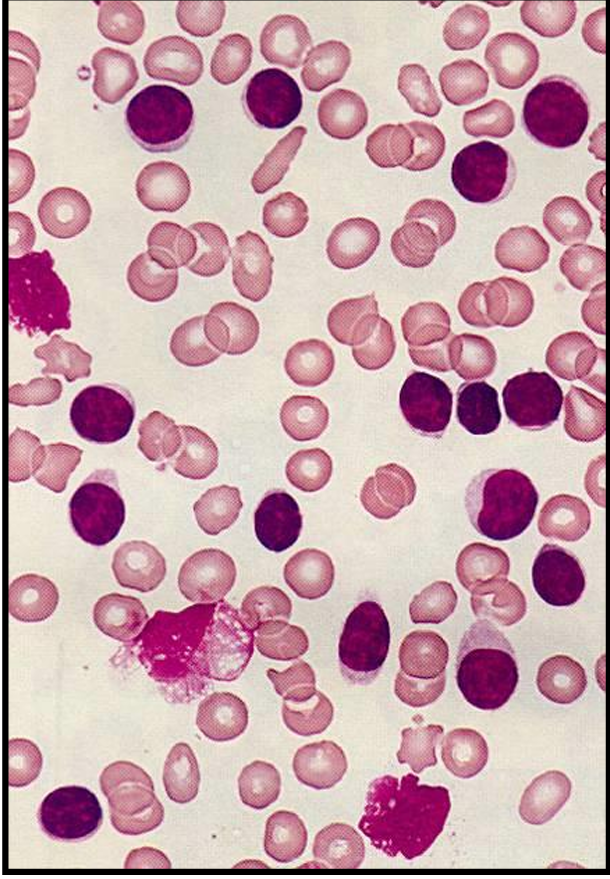Chronic leukemias
1/11
There's no tags or description
Looks like no tags are added yet.
Name | Mastery | Learn | Test | Matching | Spaced |
|---|
No study sessions yet.
12 Terms
Features of chronic leukemias (4)
Cells appear more normal
Cells may have some function, but not really functional
More slowly dividing cells
Can be asymptomatic for years

Name
Chronic myeloid leukemia

Name
Chronic lymphocytic leukemia
Chronic leukemia – general clinical presentation (2)(4)
Asymptomatic
Mild systemic symptoms
Malaise weight loss, anorexia
Fatigue (Anemia)
Bleeding episodes (PLD reduction)
Splenomegaly
Chronic lymphocytic leukemia – clinical presentation (2)(2)
*Chronic phase*
Lymphadenopathy
*Transformation to a higher grade neoplasm*
Richter syndrome
Richter syndrome
Rapidly growing mass in a lymph node → resembles diffuse large B cell lymphoma
Chronic myeloid leukemia – clinical
presentation (2)(2)
*Accelerated phase*
Impaired neutrophil differentiation with higher leukocyte counts (Think inverse diff)
Symptoms worsen = *Blast crisis*
Resembles acute leukemia
Distinguishing feature of chronic myeloid leukemia
Philadelphia chromosome
Philadelphia chromosome Steps (3)
A piece of chromosome 9 and a piece of
chromosome 22 break off and trade places
Forms the bcr-abl gene on chromosome 22
Produces a tyrosine kinase involved in cell transformation
BCR-ABL fusion protein (3)
Constitutively active tyrosine kinase
Drives the proliferation of granulocytic and megakaryocytic progenitors and release of immature cells into blood
Target therapy to this
Chronic lymphocytic more often occurs in
Adults over 50
Chronic myeloid more often occurs in
Adults between 25 and 60